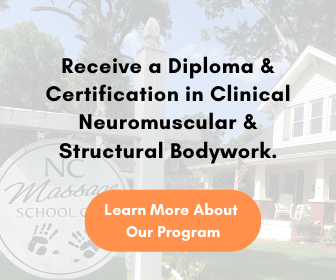Getting Started
There are many good reasons why people choose massage therapy as a career. Among the top reasons are the low stress associated with the job and that massage therapists have a significant amount of flexibility in where they work.
If you’re thinking of becoming a licensed massage therapist, here are some things you do to get started.
Look At Your Career Options and Set Some Goals
There is no single way to be a massage therapist. As you learn more about massage therapy, you’ll discover many different types of massage—including deep tissue, sports, Swedish, and trigger point. While most massage therapists practice many of these techniques and styles, they only specialize in a few. So ask yourself what methods you may want to focus on.
Also, consider what sort of practice you’d like to be involved with. Solo? Clinical? Spa? Part of your training may include the business end of things so you can open your own practice, but many students begin working for a business for a few years at first.
Set some goals, and then look at what you need to learn to meet them.

Participate and Complete a Therapeutic Massage Program
All it takes to enter a Therapeutic Massage program is a high school diploma or equivalent. The programs themselves tend to last about 15 months and can be taken at many vocational or career training schools.
Studies should include courses in anatomy and physiology, therapeutic massage, clinical massage, and, perhaps, a solid introduction to a small business if you intend on starting your own practice.
Before enrolling, find out what classes are required for graduation, so there are no surprises once you’ve started the process.
Become State-Licensed
Most states—including North Carolina—require massage therapists to be licensed. This usually requires applicants to have had at least 500 hours of training from a state board-approved school. In addition, there will be an application fee and an exam, after which you’ll be a fully licensed massage therapist.
Go online to find out what the specific requirements are for your state, and confirm that your school can help fulfill those requirements.

Consider Acquiring a Business License
If you’re planning on opening a solo practice—and many massage therapists do at some point in their careers—you’ll want to get a business license. These are relatively easy to acquire, and information can be found on most state government websites.
If you think you’d prefer to work as an employee at a spa or in a healthcare setting, you can skip the business license, but it’s good to know the option is there.
A Continuing Process
As with most things in life, there is always something new to learn. Massage therapy is a continually developing field with new techniques and knowledge appearing all the time. It’s up to you to keep up with the latest developments and always strive to improve your skillset.
You may even come to a point in your career when you feel confident to teach others what you know.
Getting Started Is Simple
While it’s a good idea to learn a bit about your future career ahead of time, don’t let that get in the way of you actually getting going. Classes are starting soon!
Contact the Massage Therapy School of North Carolina today, or download a free brochure to get yourself on the path to a career in therapeutic massage.

